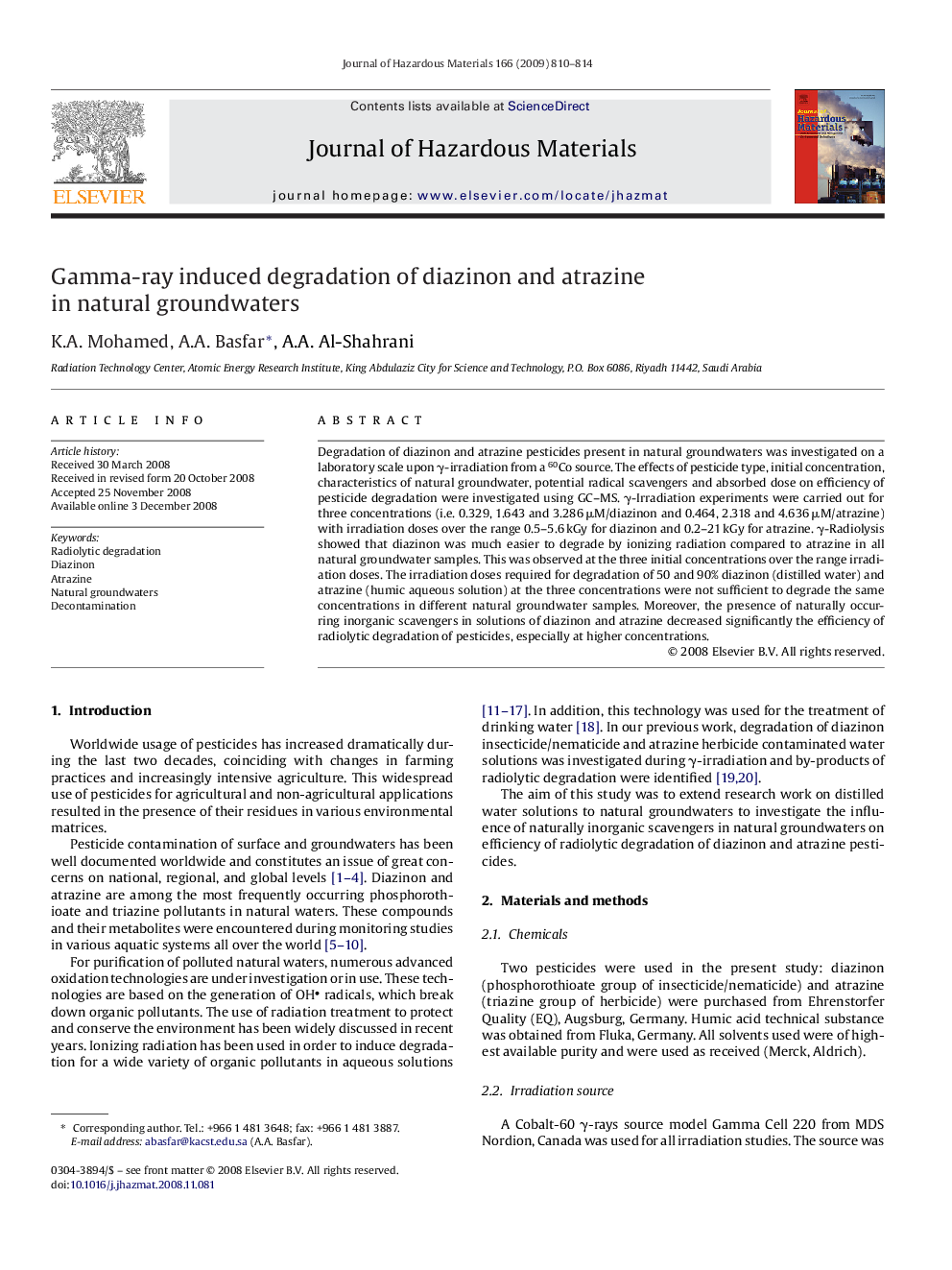| Article ID | Journal | Published Year | Pages | File Type |
|---|---|---|---|---|
| 582016 | Journal of Hazardous Materials | 2009 | 5 Pages |
Abstract
Degradation of diazinon and atrazine pesticides present in natural groundwaters was investigated on a laboratory scale upon γ-irradiation from a 60Co source. The effects of pesticide type, initial concentration, characteristics of natural groundwater, potential radical scavengers and absorbed dose on efficiency of pesticide degradation were investigated using GC-MS. γ-Irradiation experiments were carried out for three concentrations (i.e. 0.329, 1.643 and 3.286 μM/diazinon and 0.464, 2.318 and 4.636 μM/atrazine) with irradiation doses over the range 0.5-5.6 kGy for diazinon and 0.2-21 kGy for atrazine. γ-Radiolysis showed that diazinon was much easier to degrade by ionizing radiation compared to atrazine in all natural groundwater samples. This was observed at the three initial concentrations over the range irradiation doses. The irradiation doses required for degradation of 50 and 90% diazinon (distilled water) and atrazine (humic aqueous solution) at the three concentrations were not sufficient to degrade the same concentrations in different natural groundwater samples. Moreover, the presence of naturally occurring inorganic scavengers in solutions of diazinon and atrazine decreased significantly the efficiency of radiolytic degradation of pesticides, especially at higher concentrations.
Related Topics
Physical Sciences and Engineering
Chemical Engineering
Chemical Health and Safety
Authors
K.A. Mohamed, A.A. Basfar, A.A. Al-Shahrani,
